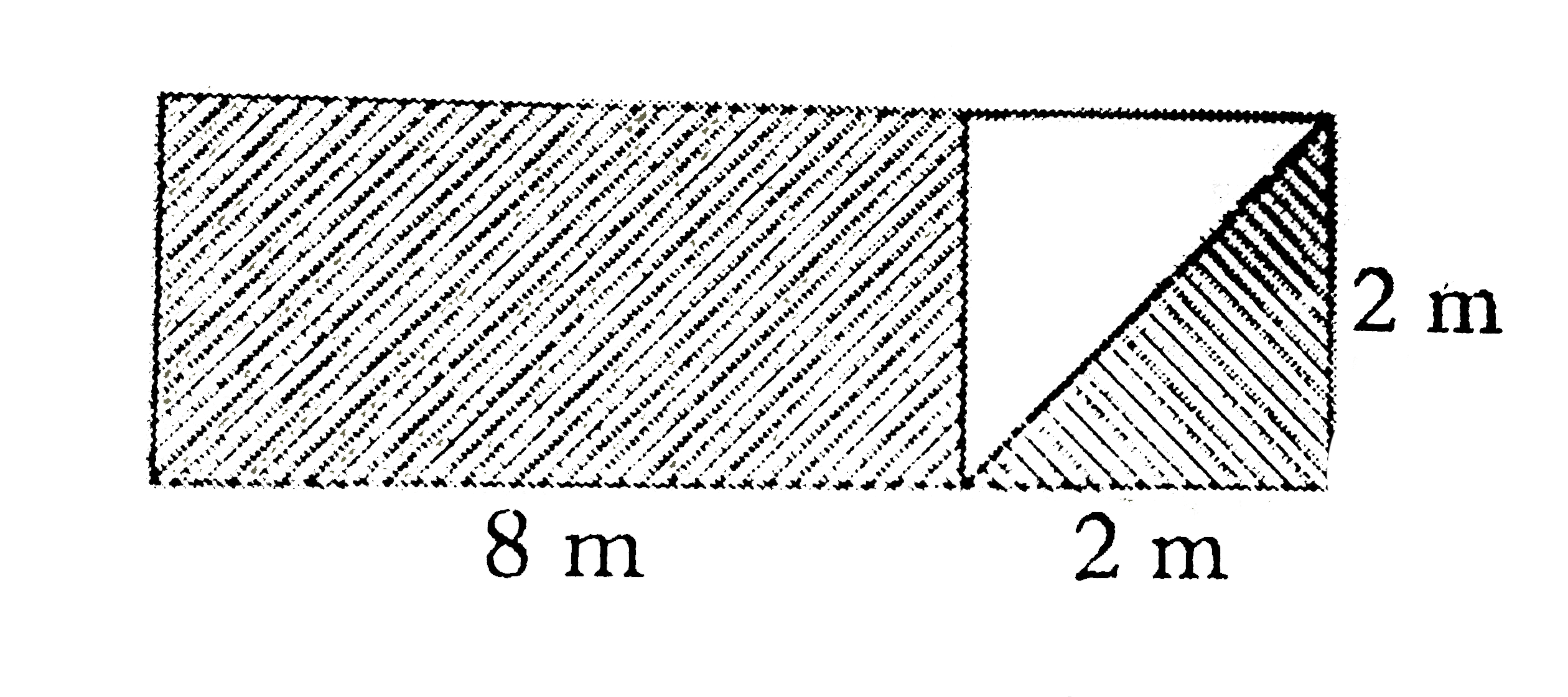The correct Answer is:a⊤,q,r,s;b→p,q;c→p,r;dtor
a. Given equations are consistent if
(ˆi+ˆj)+λ(ˆi+2ˆj−ˆk)
=(ˆi+2ˆj)+μ(−ˆi+ˆj+aˆk)
⇒1+λ=1−μ,2λ=2+μ,−λ=aμ
⇒λ=1/3andμ=−1/3
⇒a=1
b. →a=λˆi−3ˆj−ˆk
→b=2λˆj−ˆk
Angle between →aand→b is acute. therefore,
→a.→b>0
⇒2λ2−3λ+1>0
or(2λ−1)(λ−1)>0
orλ∈(−∞,12)∪(1,∞)
Also→b makes an obtuse angle with the axis . therefore,
→b.ˆi<0⇒λ<0
→b.ˆj<0⇒λ<0
Combining these two , we get λ=−4,−2
C. if vectors 2ˆi−ˆj+ˆk,ˆi+2ˆj+(1+a)ˆkand3ˆi+aˆj+5ˆk are coplanar, then
∣∣
∣∣2−11121+a3a5∣∣
∣∣=0
ora2+2a−8=0
or(a+4)(a−2)=0
ora=−4,2
d. →A=2ˆi+λˆj+3ˆk
B=2ˆi+λˆj+ˆk
C=3ˆi+ˆj+0.ˆk
→A+λ→B=2(1+λ)ˆi+(λ+λ2)ˆj+(3+λ)ˆk
Now, (→A+λ→B)⊥→C. therefore,
(→A+λ→B).→C=0
or6(1+λ)+(λ+λ2)+0=0
orλ2+7λ+6=0
or(λ+6)(λ+1)=0
orλ=−6,=−1
⇒|2λ|=12,2
Topper's Solved these Questions
- DIFFERENT PRODUCTS OF VECTORS AND THEIR GEOMETRICAL APPLICATIONS BOOK - CENGAGE PUBLICATIONCHAPTER - DIFFERENT PRODUCTS OF VECTORS AND THEIR GEOMETRICAL APPLICATIONS EXERCISE - Integer type
17 Videos
- DIFFERENT PRODUCTS OF VECTORS AND THEIR GEOMETRICAL APPLICATIONS BOOK - CENGAGE PUBLICATIONCHAPTER - DIFFERENT PRODUCTS OF VECTORS AND THEIR GEOMETRICAL APPLICATIONS EXERCISE - Subjective type
19 Videos
- DIFFERENT PRODUCTS OF VECTORS AND THEIR GEOMETRICAL APPLICATIONS BOOK - CENGAGE PUBLICATIONCHAPTER - DIFFERENT PRODUCTS OF VECTORS AND THEIR GEOMETRICAL APPLICATIONS EXERCISE - Comprehension type
27 Videos
- DETERMINANTSBOOK - CENGAGE PUBLICATIONCHAPTER - DETERMINANTSEXERCISE - All Questions
262 Videos
- DIFFERENTIAL EQUATIONSBOOK - CENGAGE PUBLICATIONCHAPTER - DIFFERENTIAL EQUATIONSEXERCISE - All Questions
578 Videos
Similar Questions
If →aand→b are any two unit vectors, then find the greatest positive integer in the range of 3∣∣→a+→b∣∣2+2∣∣→a−→b∣∣ .
View Solutionfrom a point O inside a triangle ABC, perpendiculars, OD, OE and OF are drawn to the sides, BC, CA and AB respectively , prove that the perpendiculars from A, B and C to the sides EF, FD and DE are concurrent.
View SolutionLet →u,→vand→w be three unit vectors such that →u+→v+→w=→a,→u×(→v×→w)=→b,(→u×→v)×→w=→c,→a.→u=3/2,→a.→v=7/4and|→a|=2
Vector →w is
View SolutionIf P = {1,2}, form set set P×P×P
View SolutionFor each of the following differential equations verify that the accompanying functions a solution. Differential Function
(a)xdydx=y, y=ax
(b)x+ydydx=0, y=±√a2−x2
(c)xdydxy=y2, y=ax+a
(d)x3d2ydx2=1, y=ax+b+12x
(e)y=(dydx)2, y=14(x±a)2
View SolutionIdentify the cell organelle 'A' :-
ltimg src="https://d10lpgp6xz60nq.cloudfront.net/physics_images/ALN_BIO_C10_E08_018_Q01.png" width="80%"gt
View SolutionHow many lines of symmetry does the above figure have ?
View SolutionWhich of the following are correct chain isomers of butane ? (i)
View SolutionDetermine the point of symmetry of a regular hexagon.
View SolutionDtermine the images of the following figure about the given line :
View SolutionMatch the following Column A to Column B

View SolutionMatch the following Column A to Column B

View SolutionMatch the following Column A to Column B

View SolutionFind the area of the figure given below.

View SolutionThe area of the shaded part in the figure given below is ______.

View SolutionThe inequation represented by the graph given below is :
View Solution

